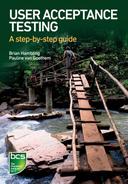CONTENTS
The value of UAT – the reasons we need to do it
Stakeholders – who this book is for
How to get the best from this book
Business intent and user expectations
Prioritising business requirements
The relationship between business requirements and UAT
The relationship between development and UAT
The working environment and working patterns
The IS life cycle as a series of transitions
UAT as an event and UAT as a process
6. PREPARING FOR UAT – PLANNING
Deciding what we want to achieve
Defining the testing we will need
Setting up the test management controls
Implementing the test schedule
How do we decide whether or not to accept a system?
Defining and evaluating emergency-release criteria
Decision process for evaluating UAT results
Test summary report conclusions
Post-implementation defect corrections
Initiating the UAT project checklist (sponsor)
Planning the UAT project checklist (UAT team leader)
UAT release decision checklist
